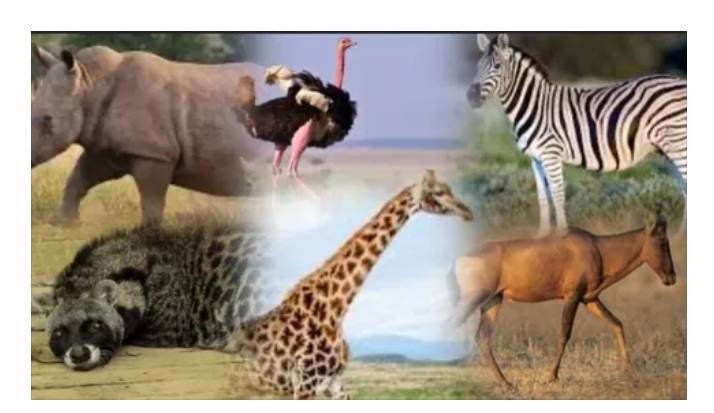10 Unique Animals Found Only in Africa
Africa is home to a remarkable array of wildlife, with many species that cannot be found anywhere else in the world. These animals have adapted to the continent's diverse ecosystems, from the savannas and deserts to the rainforests and wetlands. Here are 10 unique animals that are found only in Africa, showcasing the continent's rich biodiversity.
1. African Elephant (Loxodonta africana)
The African elephant is the largest land mammal, known for its intelligence, complex social structure, and impressive tusks. Found throughout sub-Saharan Africa, these elephants roam grasslands, forests, and savannas. Their large ears help regulate their body temperature, and they play a crucial role in maintaining the ecosystem by dispersing seeds and creating water holes used by other animals.
2. Giraffe (Giraffa camelopardalis)
With its long neck and towering legs, the giraffe is an iconic symbol of the African savanna. There are several subspecies of giraffes, and they can only be found in Africa, from the open plains of South Africa to the forests of Central Africa. Giraffes are browsers, feeding on the leaves of trees, particularly acacia species. Their long necks give them access to food that other herbivores cannot reach.
3. Okapi (Okapia johnstoni)
Known as the "forest giraffe," the okapi is a relative of the giraffe, although it looks more like a zebra due to its dark brown coat and white-striped legs. Native to the dense rainforests of the Democratic Republic of Congo, the okapi is elusive and difficult to spot, which makes it one of Africa's more mysterious animals.
4. Cheetah (Acinonyx jubatus)
The cheetah is the fastest land animal, capable of reaching speeds up to 70 miles per hour in short bursts. Found in various parts of Africa, from grasslands to savannas, cheetahs rely on their incredible speed to catch prey such as gazelles. They have distinctive black tear marks under their eyes, which help reduce glare from the sun and improve their focus while hunting.
5. African Wild Dog (Lycaon pictus)
Also known as the painted wolf, the African wild dog is one of the most endangered carnivores in Africa. This highly social animal lives in packs and is known for its cooperative hunting strategies. Their unique coat pattern, made up of irregular patches of yellow, black, and white, makes them stand out. African wild dogs are primarily found in southern and eastern Africa.
6. Nile Crocodile (Crocodylus niloticus)
The Nile crocodile is one of the largest reptiles in the world, reaching lengths of up to 20 feet. It inhabits rivers, lakes, and wetlands throughout Africa. Known for its powerful jaws and stealthy hunting technique, the Nile crocodile is an apex predator, capable of ambushing prey both in the water and on land.
7. Mandrill (Mandrillus sphinx)
The mandrill, one of the largest primates, is found in the rainforests of central and West Africa. Recognizable by its striking facial coloration, with bright blue and red hues on its face and behind, the mandrill is a social animal, living in large groups. It feeds on fruits, seeds, and small animals, and its large size and sharp teeth help it protect its territory.
8. Black Rhinoceros (Diceros bicornis)
The black rhinoceros, smaller than the white rhinoceros, is critically endangered and primarily found in eastern and southern Africa. Unlike their white cousins, black rhinos are more solitary and have a pointed upper lip that they use to grasp foliage from bushes and trees. They play an important role in their environment by helping maintain the balance of plant life.
9. Kakapo (Strigops habroptilus)
The kakapo, also known as the owl parrot, is native to New Zealand, but it's often included in African wildlife discussions due to its ecological connections. This nocturnal and flightless bird is critically endangered, and its population has been isolated in Africa. Its conservation is a major effort to preserve the distinct species.
10. Pygmy Hippopotamus (Choeropsis liberiensis)
Unlike the common hippopotamus, the pygmy hippopotamus is much smaller, standing at only about 3 feet tall. It is found in the forests and swamps of West Africa, primarily in Liberia and Guinea. Pygmy hippos are shy, solitary creatures that spend much of their time submerged in water to keep their skin cool and moist.
Conclusion
These 10 animals highlight the incredible diversity of wildlife that calls Africa home. Each species has evolved to thrive in its specific environment, contributing to the unique ecological tapestry of the continent. While many of these animals face threats such as habitat loss and poaching, ongoing conservation efforts are essential to ensure their survival for future generations to admire and protect.


